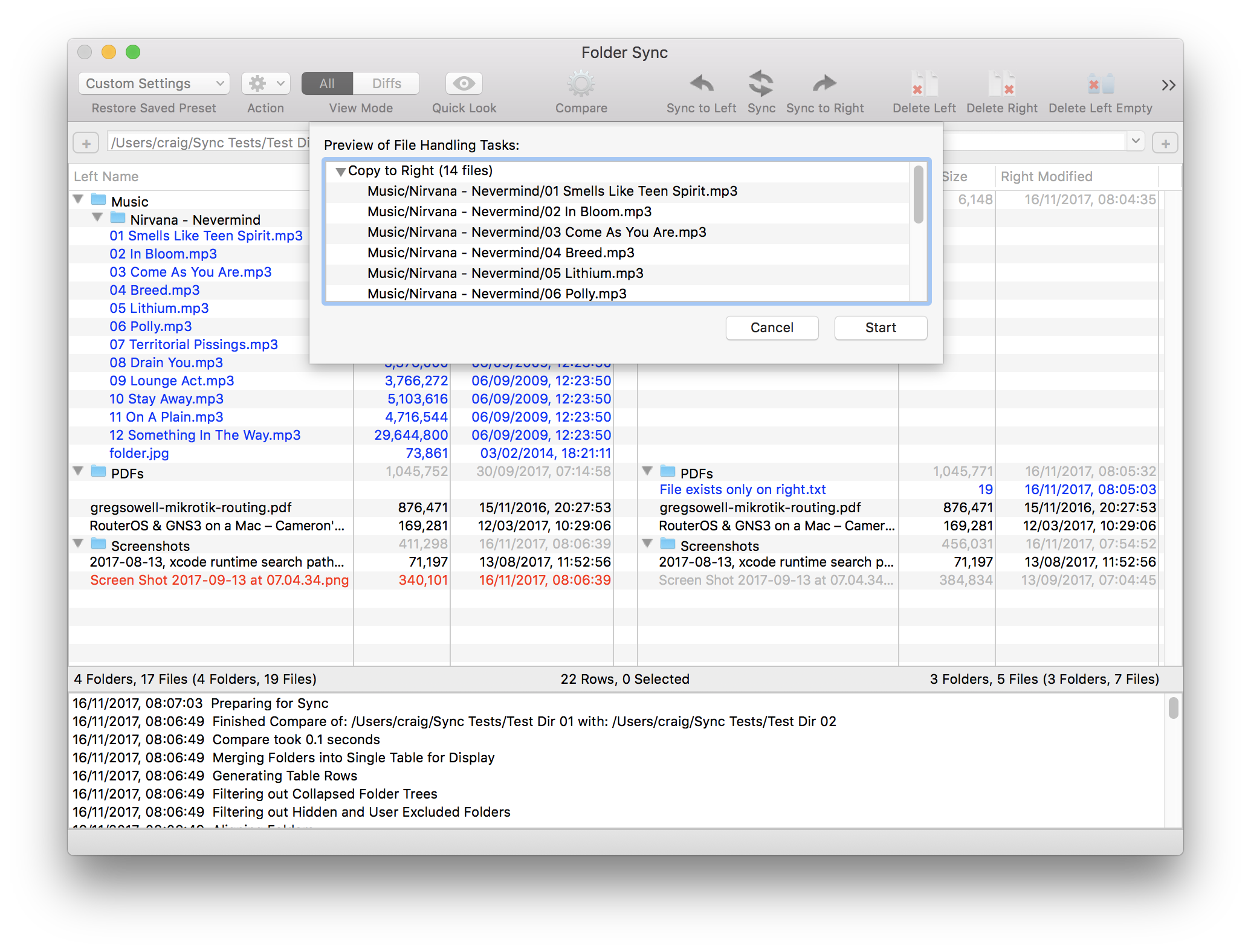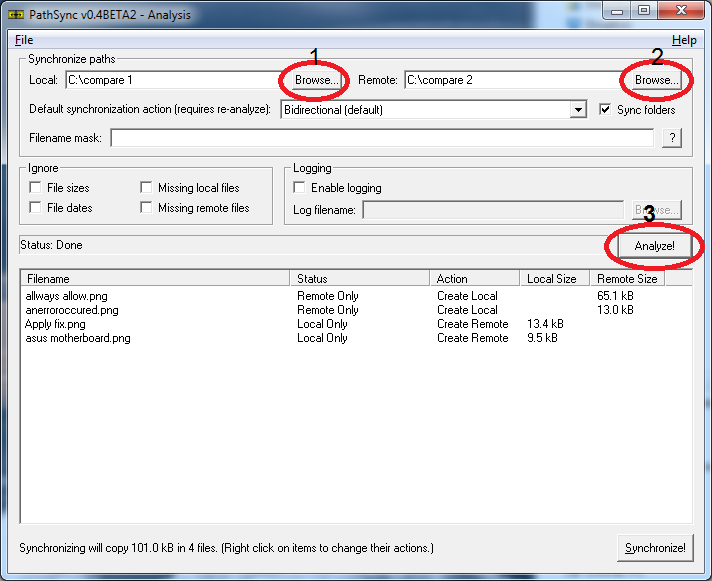
We’re then reading each of those files into foreach loop and checking to see which sides needs to copy from and to. You’ll see that we’re getting the output of Compare-Object that contains all the different files. To do this, we’ll have to create a script like the following. We now need to copy whatever files Compare-Object finds to the folder that doesn’t contain the file. Compare-Object shows that newfile1234.xml is in $Folder1 but not in $Folder2. In the example, we created a dummy file in $Folder1 and now you can see the folders are out of sync. However, what happens when we add a file to one of the folders? Since both of our folders are in sync at the moment, this is what we see. If each collection is the same, it will output nothing. It will then look at each one and output which items are in the difference collection and which items in the reference collection are different.Ĭompare-Object -ReferenceObject $Folder1Files -DifferenceObject $Folder2Files Compare-Object allows you to specify two different collections.

A great PowerShell cmdlet to do this is Compare-Object. $Folder2Files = Get-ChildItem -Path $Folder2Path $Folder1Files = Get-ChildItem -Path $Folder1Path

This will give us two collections to compare. Next, we’ll have to discover everything in each of these folders. The first thing we’ll need to do is define the locations of each folder.įor demonstration purposes, we created these two folders and have placed 101 identical text files into each folder. However, we’ll still come out with a useful way you can sync files from one folder to another. We’ll be manually kicking off the script rather than using automatic triggers and we’ll be using basic PowerShell commands - no complicated. If you’re an advanced PowerShell scripter I recommend checking out Steven Murawski’s work on the Sync framework.įor today, we’ll just be covering the basics. Some methods have features like automatic triggers, file hashing and other advanced features but these methods would take much too long to go over in a short article. Syncing files with PowerShellįirst, as with everything in scripting, there are numerous ways to make this happen. This is what we’re going to be covering today. You can generally implement any feature you like as long as you have enough experience and time. By using PowerShell, you’re not boxed in by off the shelf software. This is why using a PowerShell script to accomplish syncing is the best option.
#FOLDER COMPARE AND SYNC FOR MAC SOFTWARE#
You can purchase software or even download free software, which will probably work well, but sometimes it might limit you in what you can achieve. Syncing involves reading the entire contents of a folder, reading the other contents of a folder, calculating the difference and then making a decision on which files to copy which way. Essentially, syncing is just copying files but it’s smarter. But what if you want to ensure a complete replica of a folder rather than just copying some files from one folder to another? This is when you’ll need to sync the two folders. Simply drag them over across your window or use a simple command line like Copy-Item -Path C:Folder* -Destination SERVER2c$Folder2. Copying files from one folder to another is pretty easy. Mountain Duck which allows you to mount the remote volume and synchronise files with any of your preferred tools such as rsync.Although there is software that will sync files and folders for you, even paid software can be limiting. If you want to automate things you will be better off with eitherĬyberduck CLI which allows you to write a script and schedule ot with your preferred method such as cron. You have to manually restart the synchronization in the transfer window. Have a newer timestamp on the local filesystem Only Upload Files įiles are uploaded that match one of the following criteria: Only Download Files įiles are downloaded that match one of the following criteria:
#FOLDER COMPARE AND SYNC FOR MAC PLUS#
Plus Sign: The file does not exist and will be newly created when transferred.įiles are transferred in both directions and created if missing or replaced with the newer file on either system depending on the timestamp.

Up Arrow: The file is uploaded to the server replacing the remote file if included. You will be prompted to confirm the actions and if missing files should only be downloaded, uploaded, or mirrored.Ĭheckbox: Toggle to include or exclude files or directories from the transfer.ĭown Arrow: The file is downloaded from the server replacing the local file if included. The MD5 checksum of the file (for S3, Azure, and CloudFiles) The modification date of the files and if available The criteria to download or upload a file are given by The options in Preferences → Transfers → Timestamps must be enabled.


 0 kommentar(er)
0 kommentar(er)
